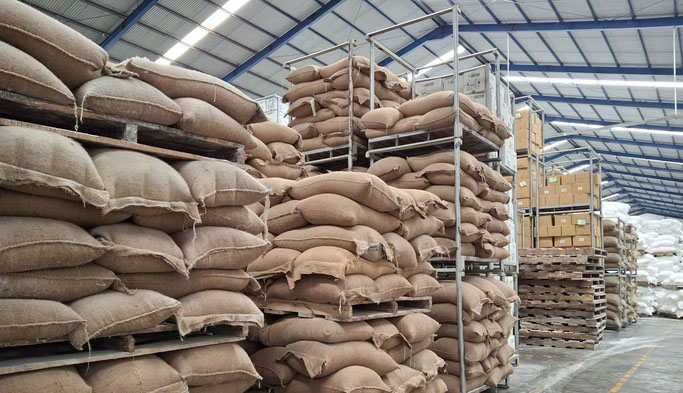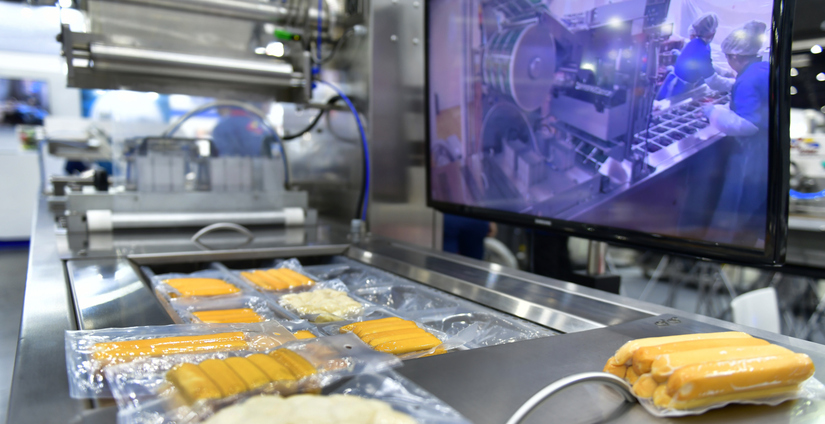For the manufacturing industry, especially food manufacturing, supply chain disruptions are becoming increasingly common. From ingredient shortages and demand shifts to transportation delays and rising costs it’s harder than ever for food producers to get the right products to the right place at the right time. The COVID-19 pandemic and other global events have further highlighted vulnerabilities in global supply chain networks.
But these disruptions have an even greater impact of supply chain disruptions on food manufacturers since, unlike some other industries, they deal with perishable goods and strict regulatory compliance requirements that demand agile planning. But many food manufacturers still rely on outdated planning tools and disparate systems that can’t keep pace with today’s rapidly changing environment, including challenges from closures, wildfires, natural disasters, tariffs, and extreme weather events. 1
With the right strategies, process improvements and technologies, food manufacturers can optimize supply chain operations and build more supply chain resilience.

Building a Resilient Food Manufacturing Business in the Face of Disruption
Download this guide to discover how to build resilience into every part of the organization—from operations to workforce and financial planning.
The Current Supply Chain Reality in Food Manufacturing
It’s no secret that food manufacturers are dealing with a range of challenges. Here’s a rundown of some common pain points which may look familiar:
- Volatile ingredient pricing – Many ingredients are subject to price swings and availability issues.
- Unreliable supplier performance – Global events, cyberattacks, climate change, and geopolitical tensions have disrupted sourcing relationships.
- Labor shortages and capacity constraints – Many plants are struggling to keep lines staffed and running at expected levels.
- Inaccurate forecasting – Demand patterns have shifted dramatically post-pandemic, and many systems haven’t caught up.
- Manual, siloed planning processes – Spreadsheets and disconnected legacy tools make coordination slow and error-prone.
- Regulatory compliance pressures – from FSMA and ESG reporting to allergen tracking, manufacturers need real-time traceability across the supply chain.
There’s no end in sight to these issues. To cope with them, companies need to rethink their strategy for managing dependencies and supply chain risk. Predictive analytics and demand forecasting must be a major component of the plan.
The Forecasting Problem: Why So Many Food Manufacturers Are Flying Blind
When faced with today’s landscape volatility, traditional forecasting methods often fall short. Their reliance on historical sales data doesn’t factor in the dynamic conditions experienced today. Circumstances like shifts in consumer preferences, unexpected demand, or global trade disruptions to raw materials can leave manufacturers with costly mistakes in their forecasts.
Common challenges with current forecasting practices include:
- Lagging data – Forecasts are often based on outdated reports, not real-time demand signals.
- Limited visibility – Many companies don’t have insight into distributor or retailer inventory, making demand harder to predict.
- Lack of collaboration – Sales, marketing, and production teams often create their own versions of “the truth,” leading to misaligned decision making.
- Inability to factor external drivers – Weather, global economy, inflation and even social media trends are rarely built into demand planning models.

Best Practices for Building Data-Driven Forecasting Models
By improving forecast accuracy, companies can reduce inventory costs, minimize waste and ensure products are available when needed. These best practices can help organizations enhance their forecasting capabilities and risk management:
- Implement Modern Demand Planning Tools
Adopt ERP systems or demand planning solutions that leverage artificial intelligence (AI) and machine learning. These tools analyze data sources such as point-of-sale (POS) trends and supplier performance to deliver more accurate forecasts. - Align Cross-Functional Planning
Encourage collaboration across departments by developing integrated planning processes. When sales, operations, finance, and procurement teams work from unified forecast metrics, it improves coordination, reduces errors, and enhances stakeholder agility. - Clean and Standardize Data
The accuracy of a forecast depends heavily on the quality of data. Establish a consistent data foundation by standardizing key data. Reliable, clean data enables more effective analytics and reduces confusion across systems.3
“…data-driven organizations show a 30 per cent increase in annual growth in addition to being profitable and acquiring and retaining new customers.”
Steven Burton - MRO Magazine
Solving the Procurement Puzzle: What to Do When Supply Is Unreliable
While forecasting is important, the other part of the equation is ensuring you have the materials you need to meet demand. This is easier said than done with supply chain issues like:
- Lengthy lead times
- Unpredictable supplier performance
- Limited visibility into inventory across the network
- Manual PO processes that slow down response times
To address these issues, it’s necessary to take a multi-pronged approach. Here are some points to consider:
Improving Supplier Collaboration
Through ERP and SCM tools that support supplier portals and automated communication, businesses can share forecasts, inventory levels, and quality standards with suppliers in real time—boosting transparency and responsiveness.
Enhancing Procurement Planning
By integrating procurement and production planning, manufacturers can prioritize critical materials, identify alternate suppliers faster, and shift production schedules based on real-time availability.
Supporting Strategic Sourcing
Evaluate supplier risk, create diversification in sourcing strategies, and build contingency plans—through more strategic procurement processes.4
Ready to start your digital transformation journey?
Digital Transformation Is the Foundation
The common thread across these improvements? A modern, connected digital foundation. Legacy systems and manual processes can’t keep up anymore. Digital transformation draws from data, technology, and people to create a responsive supply chain.
A modern ERP or supply chain management (SCM) system provides a single source of truth, enabling real-time visibility into demand, inventory, procurement, and production. When paired with advanced analytics, AI, and automation, these systems have a significant impact, helping teams make faster, smarter decisions based on up-to-date information.
But digital transformation is more than just new technology—it’s about aligning systems with strategy, breaking down information silos, and fostering a culture of continuous improvement. Companies that invest in their digital infrastructure lay the foundation for long-term agility and competitive advantage.
Final Thoughts
Unfortunately, supply chain disruptions are here to stay. But food manufacturers can take action to become more agile and data-driven in how they respond. By rethinking forecasting and procurement through a modern ERP and supply chain lens, companies can exert more control over operations, even in the face of unpredictable environments.
Ultra Consultants offers the tools, expertise, and industry know-how to guide that transformation. Whether you’re struggling with forecasting accuracy, procurement bottlenecks, or fulfillment inefficiencies, Ultra can help you turn your supply chain into a source of strength—not stress.
Ultra Consultants specializes in helping food manufacturers:
- Select the right ERP system based on your business needs
- Map out a digital transformation strategy aligned with your operational goals
- Redesign business processes to boost efficiency and take full advantage of system capabilities
- Support change management and user training to drive adoption, maximize ROI and ensure long-term success
Ready to take the next step?
Let’s talk about how Ultra Consultants can help you build a smarter, more resilient supply chain—designed for the challenges of food manufacturing. Reach out today for a discovery call.
Table of Contents
More ERP material...
AI in Food and Beverage Manufacturing
Discover how AI is revolutionizing food and beverage manufacturing, enhancing quality, reducing…
How ERP for Quality Control Eliminates Manual Documentation Chaos
This post will examine why managing quality records outside of an ERP…
Assessing Your AI Maturity
This article breaks down how businesses can measure their AI maturity to…



